WAR! 1914
Lancaster and The King's Own go to War.
Generously supported by the Sir John Fisher Foundation.
Lancaster’s Prisoner of War Camp
Once vacated by the territorial soldiers of the 5th Battalion on 14th
August 1914, the former Carriage and Wagon Works became available for
another important war purpose, that of being a prisoner of war camp.
Contractors started working on the site, adding barbed wire around the
walls. On Thursday 20th August a company of the 3rd Battalion Royal
Welsh Fusiliers arrived to take charge of the prisoners, the first of
which arrived the following Monday, conveyed by direct train to the
works sidings. In the first week 380 prisoners arrived, many of them
seamen whose boats had been in British ports when the war started.
By the middle of September the camp population had swelled to 1,700 with
prisoners arriving from Manchester, Newcastle and Carlisle. Most
prisoners were German or Austrian nationals. Although mostly men, some
were detained with their families, including children.
One of the officers of the Royal Welsh Fusiliers was poet and author
Robert Graves, who mentions his time in Lancaster in his autobiography,
“Goodbye to all that”.
By October the Royal Welsh Fusiliers had been replaced by men of the
National Reserve, many of whom were from the King’s Own Royal Lancaster
Regiment, but too old for active service.
At the end of October the Lancaster Guardian reported:
“The population at the Prisoners Detention Camp has been increased
latterly by the arrival of many Germans, over 100, who had been
collected at Manchester. There are about 2,000 prisoners in the camp. A
temporary theatre has been fixed up, and entertainments are given by
prisoner-artistes, who include several talented acrobatic troupes and
jugglers, besides comedians. Four Germans from the borough have been
sent to the camp.”
December 1914 saw an appeal in the press for comforts for the soldiers
at the camp. Requests were made for woollen gloves and sleeping helmets
“the weather has been very trying to many of them whilst on night duty,
and a pair of gloves to cover their hands when carrying the rifle would
be a great boon. The sleeping camp is exceedingly draughty, owing to
immense size, large doors etc.”
“It would be nice to present them with a piano to relieve the monotony
of the camp. The prisoners have pianos, provided them by their German
relatives and friends; surely our own men should be supplied with an
instrument to enable them to while away the hours when they are not on
duty – hours that are often dull and tedious.”
Prisoners continued to arrive at the camp, which remained in use until
at least the end of 1915.
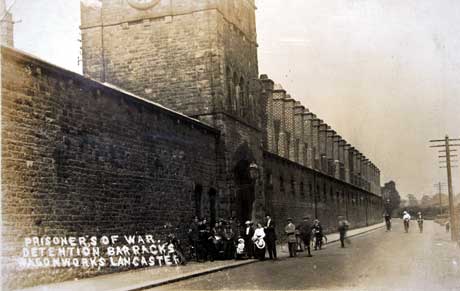
Prisoner of War Detention Barracks, Wagon Works, Caton Road, Lancaster.
This postcard was posted to Colour Sergeant F A Haigh of the 5th King’s
Own at Didcot, on 14th October 1914.
Accession Number: LM82/46/60
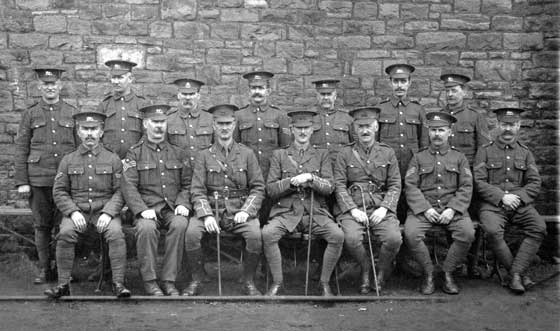
Senior Non-Commissioned Officers and Officers who were guarding the
Prisoner of War Camp. This card was posted on 10th June 1915 by the
King’s Regiment officer, Lieutenant E Smith, who is named on the carved
bone seen in the near by case.
Accession Number: KO2917/49
Carved Bones
The King's Own Museum collection contains two carved bones known to
have been made at the Prisoner of War Camp on Caton Road.
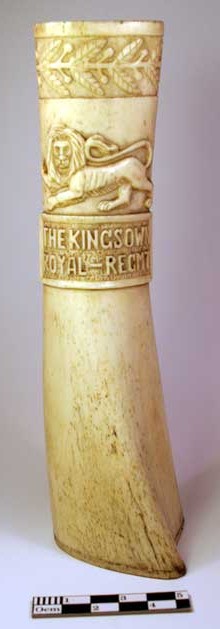
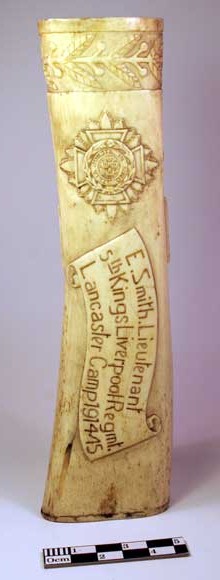
Featuring the Regimental Lion and 'The King's Own Royal Regiment' on one
side and 'E. Smith. Lieutenant, 5th King's Liverpool Regmt. Lancaster
Camp 1914-15' on the other, the sender of the above postcard.
Accession Number: KO2590/406
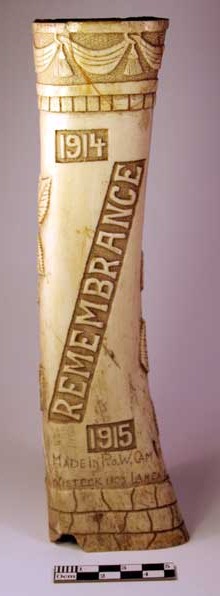
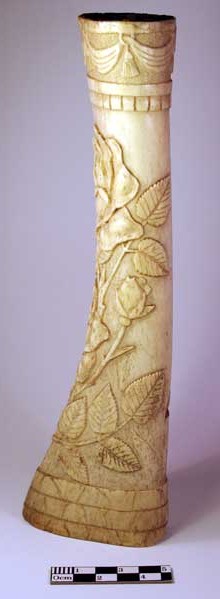
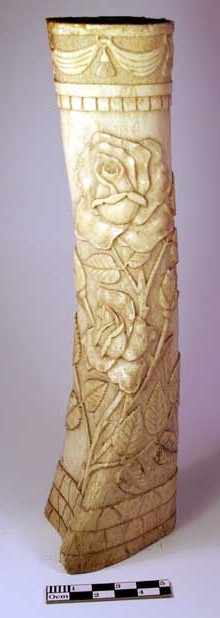
This bone featuring a rose and leaves is marked '1914 Remembrance 1915'
and 'Made in POW Camp, Vieteck, 1803, Lancaster'.
Accession Number: KO2590/407
Killed whilst on guard
Sergeant Richard Dixon of the King’s Own and a veteran of the South
African War was on duty at the Caton Road Camp on 12th September 1915
when he was knocked down by a motor cyclist named George Taylor, of
Lounds Farm, Hornby. Dixon was conveyed to the Royal Lancaster Infirmary
in an unconscious state where he died.
No Credit to Lancaster
The Lancaster Guardian of 19th September reported “a deplorable case
illustrating the seamy side of life” when Hannah Morland, 24, wife of a
Territorial, living at 3, James Street, was charged with keeping a
brothel. The trial at the Magistrates court was prosecuted by Chief
Constable Harriss, who stated that Mrs Morland’s husband was away with
the 5th Battalion, and since he had been away she had been carrying out
this business, and during the last three or four weeks had been assisted
by other women. The house had been under observation by the police and
it was known that some soldiers of the Royal Welsh Fusiliers had spent
the night in the house.
The newspaper reported: “Captain Fairclough, of the Royal Welsh
Fusiliers, said they had great difficulty in keeping the men at the
Wagon Works, and they gave more trouble than the prisoners, owing to the
number of girls constantly hanging about the place. Many of them were
quite young girls with hair hanging down their backs. Two got inside the
other day, spent the night in the place, and were lifted over the walls
by soldiers the next morning”.
Magistrate Councillor Briggs declared it “a very demoralising and
shocking state of affairs”, and that any action the military authorities
might take would have the support of the Bench, who were determined to
try and stop such occurrences in Lancaster. Morland was sent to the
Castle Prison for two months hard labour.
© Images are copyright, Trustees of the King's Own Royal Regiment Museum.
You must seek permission prior to
publication of any of our images.
Only a proportion of our collections
are on display at anyone time. Certain items are on loan for display
in other institutions. An appointment is required to consult any of
our collections which are held in store.








